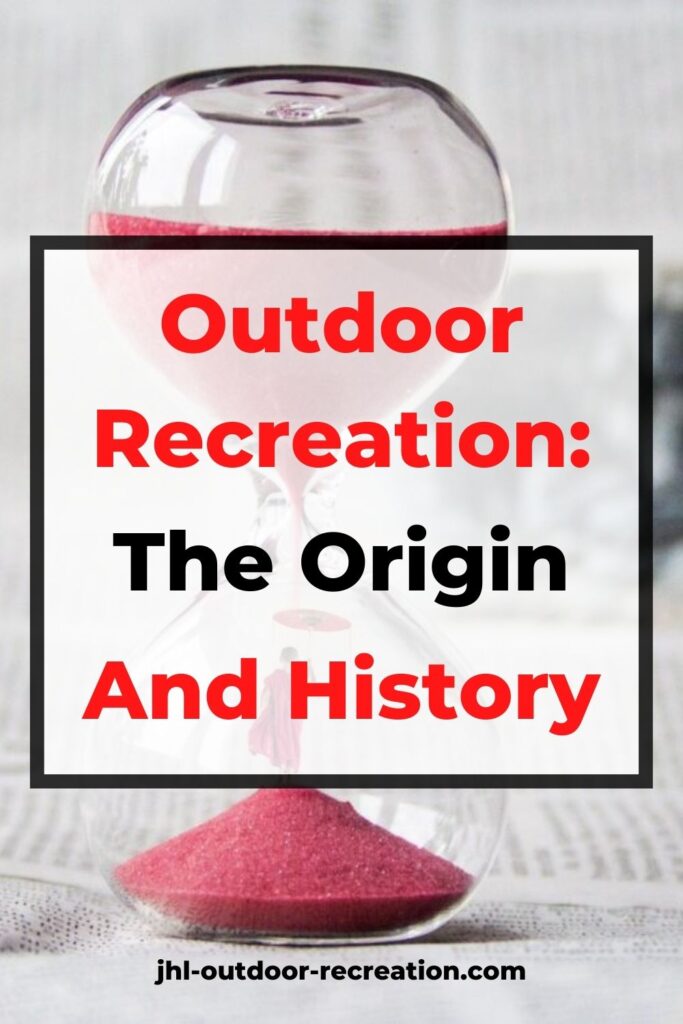Let’s face it. We don’t pay attention to history even for the activities of outdoor recreation that we enjoy. – Am I right?
If you are a hiker, you love the embrace of the nature. If you are into water sport, you love the excitement of “piercing” through the water with your vessel. Even if you are nobody, you may like to walk and stroll in a city park, watching people jogging, playing basketball, playing Tai Chi, or taking dogs for a walk.
Regardless of who we are, we go outdoors for recreation because this makes us calm, excited, refresh our mind, and recover our energy.
But, did you know what we enjoy right now had gone though a long revolutionary process?
If you were given a time machine, would you like to travel back in time to see what “outdoor recreation” is like?
Yes, in this session, we are going to explore the origin and history of outdoor recreation.
Definition of “Recreation”
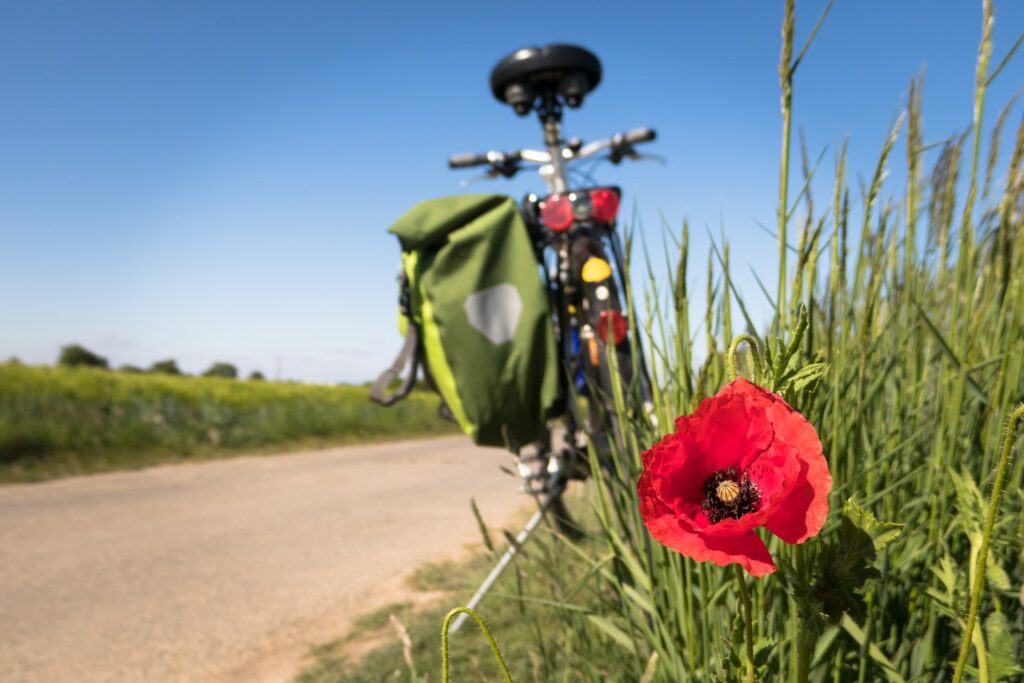
As the words suggest, “outdoor recreation” is the “recreation” in outdoors.
According to Cambridge Dictionary, Recreation is (a way of) enjoying yourself when you are not working.
Think about this: what do we like to do when we are free? – Maybe we play games and sports.
That’s right, if you look at the historical side, you would notice the elements like “games”, “sports” and “play” play an important role in the evolution of recreation.
So, let’s look at the historical side of recreation.
This post is based on the chapter about the history of recreation and leisure of the book Recreation & Leisure in Modern Society.
It provides profound explanation on evolution of recreation. If you like history, I highly recommend you to take some time to read this chapter or book.
Although this chapter talks about the evolution of recreation in the USA, the evolution is also similar in other countries.-Why? Look at the interconnection of the global economy and tourism today.
For this purpose of discussion on outdoor recreation history, the evolution can be broadly divided into two categories, which are pre- and post-industrial revolution.
Pre-Industrial Revolution
An agricultural-based period. People learned hunting skills for survival. They played games to entertain themselves or for spiritual purposes. Also, they played sports for competition or military purpose.
Civilisation
I believe you have heard of the history on the great civilizations, such as Egypt, Babylonia, Rome, Greece etc. Plus, you could see there are similarities between these ancient civilizations.
Look at their ancient creation, like those scripture, picture, architecture and knowledge on astronomy, science and mathematics.
Maybe you will realize their philosophy in life is closely related to what we consider as “recreation” today.
Then, you will know that they emphasize on the balance of mind, body, spiritual and entertainment.
Hence, you could see that their main activities revolve around these aspects.
A great example is the Greek Philosophy of Recreation and Leisure which emphasizes the unity of mind and body. It believes there is a strong relationship of all forms of human qualities and skills.
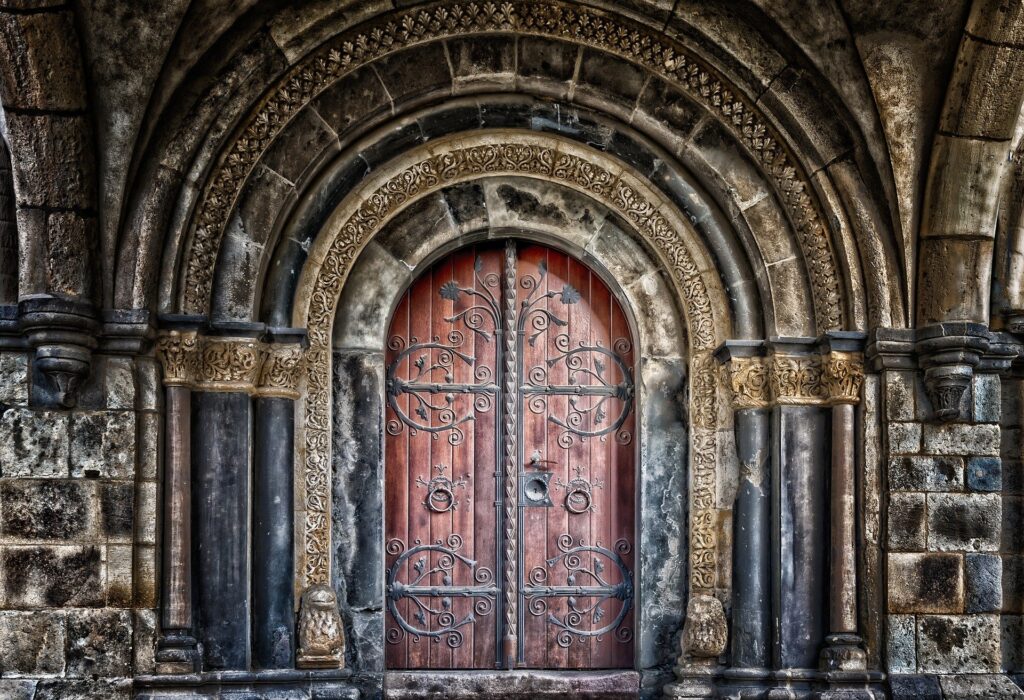
Hunting
Survival skills for the citizens like fishing, archery, horse riding, etc, to make a living.
A good example is lion hunting in chariots and foot by using spears in Ancient Assyria and Babylonia.
In fact, this doesn’t just apply to the ancient civilization. Think about it, hunting is a necessity activity since the existence of human being.
Compare ourselves to them. You see those survival skills had evolved to become recreational activities that we enjoy today.
Town planning and Sport
What comes to your mind when you think of those ancient civilizations? – That’s right, is their architecture!
Name a few of them – Great Pyramids from Ancient Egypt (and now scientists still have no idea how Great Pyramids were built!); Hanging Gardens from Ancient Babylonia (even though we are still unsure about the existence).
It is not surprising that the ancient people already knew the importance of having a proper town planning (even it is still relevant today). – Parks, gardens, theatre, gymnastics in schools, ponds, etc.
And, those facilities were used for leisure and sports purpose for the citizens.
And of course, Olympic Games from Ancient Greece. – Can’t believe Olympic Games has around 3,000-year history.
Spiritual and social purpose
Dancing, singing, and listening to music. – Typical entertainment and leisure activities that we do today.
This is not hard to fathom because we could still see these activities perform in worshipping, spiritual and social purposes today, wedding and funerals for instance.
These are common in Ancient Egypt, Ancient Rome and Ancient Greece. – Pharaoh and 12 Greek Gods and Goddesses.
Defensive and war
Horse riding, archery, wrestling, javelin, sword, swimming, etc.
Ancient Greece and Ancient Rome shared the similar approach, where boys had to learn running, jumping, spearing, wrestling, swimming, horse riding.
No wonder we see the statutes of Greeks and Romans – so athletic and warrior-like figure.
Entertainment
Although ancient people were aware of the importance of leisure in creating well-being, there was a significant change in Ancient Rome.
In this civilization, agricultural development created class division. Gradually, the emperor provided food and entertainment to Plebians, working citizens of Ancient Rome to support their family and pay taxes, to avoid riot from them. Hence, here we called “Bread and Circuses”.
The emperor evolved as military was no longer the focus and the leisure requirement increased and hence, entertainment became the central life.
The entertainment lust enlarged as competitive sports became commercialized. Romans liked to watch human or animal combat, where they had to fight to death. – Sad, but true.

The Emergence of Christianity Era
This marked the fall of Ancient Rome. The development of recreation is non-linear; rather, it is curved, depending on the stages of Christianity.
For the purpose of this post, the development is broadly classified into three stages: Dark and middle age, the Renaissance, and Protestant Reformation.
Dark and Middle Age
The concept “leisure” adopted by Romans was replaced by “work” from Christian. They believed that “idleness” is bad of our soul. This is where you could see a totally different perspective from the above ancient civilizations.
They destroyed the leisure and recreational buildings of Ancient Rome. Then, they built Churches strictly for worshipping. Monks were occupied by either physical work or bible reading.
However, as life in Middle Age became stable, certain forms of plays and sports were still maintained even disapproved by Churches. Those include hunting, hawking, chess, gambling, music and dancing.
Not forget to mention that the people liked sightseeing and they like to travel for entertainments. – No wonder people nowadays like to travel, because it is in our DNA.
Renaissance
In this era, the disapproval of “leisure” was challenged and the era of expression and appreciation of knowledge and art began. – This is something like a rewind of the revolution as it went back to the philosophies of earlier civilizations.
The power has shifted from Churches to noblemen. As a result, they expressed through paintings, music, singing and dancing.
They considered “play”, as opposed to “idleness”, as educational purpose, which emphasizing the need for physical exercises and games to work on mind and the body. – Similar to the earlier civilizations.
Protestant Reformation
When the Reformation emerged, play/ leisure was once again been prohibited.
So you see: it looks like there is a reciprocal relationship between religion and leisure. It makes sense though, as if people are indulged in play like gambling and entertainment, the economy is not improved.
New England and American Colonial Period
Alright. English and European explored the new world, i.e. New England.
Essentially, they started from scratch: worked to build and plant crops. As they spent their time on work, they didn’t have much time for leisure and entertainment. No nobility for entertainment, whatsoever.
In addition, the idea of “idleness” was still in place strongly in New England.
According to Sabbath Law, Sunday work, travel and recreational activities were prohibited.
However, as the control of Puritan reduced, there was an emergence of “lottery” and it immediately became a main source of revenue for the development in this American colonial.
After that, restriction of recreation / play was relaxed as long as they were related to work.
What we could learn from this: recreation can contribute to the growth of economy and it is not “idle”. – In fact, this is so relevant and true in our economy as well.
Post-Industrial Revolution
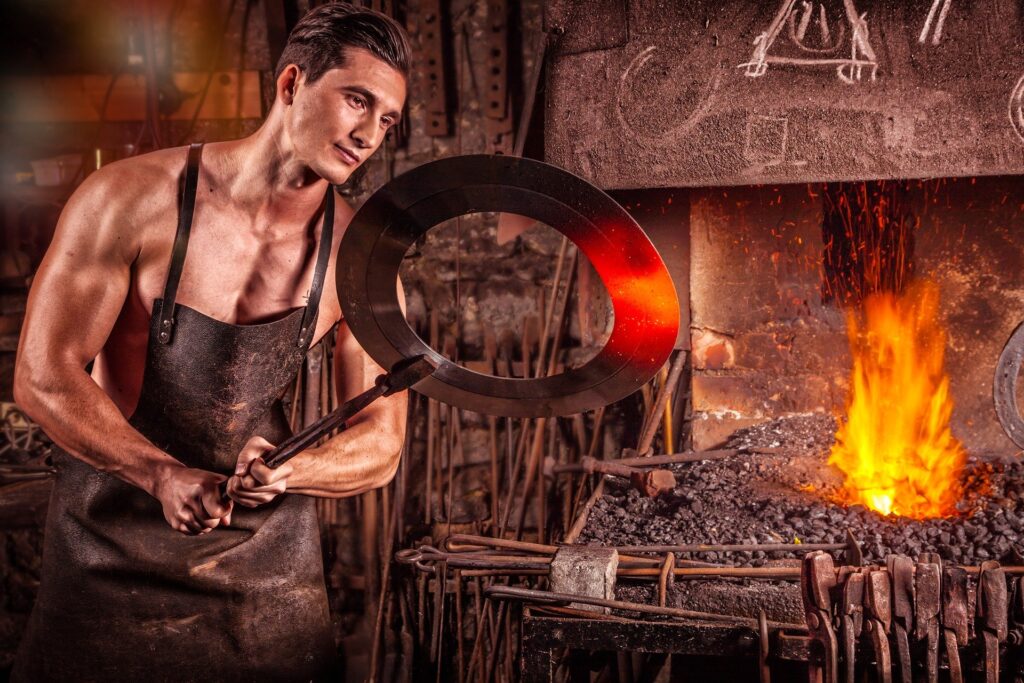
A significant change to economic model: from manpower reliance to the emergence of machinery. – A significant turning point to the history of outdoor recreation, too.
This essentially reduced the working time of citizens and they had more leisure time. – A change in recreation and leisure as well.
Let’s explore the further development of recreation, to the extent of outdoor recreation
Education
Interest and importance of sports were growing. The ability of a student no longer relied on his academic aspect, but also on non-academic aspect.
There were numerous competitive sports programme in high schools or colleges. – Football, baseball, basketball, rowing, swimming, cycling, running, etc.
In short, the education placed emphasis on the co-curricular activities.
Development of Parks and Urban Planning
In the US, as national development continues, the government was aware of the necessity of forest and wildlife preservation.
The first national park declared in the US is Yellowstone in 1872. – This marks an important stage in the development of national parks and state parks.
Maybe you are wondering the difference between national and state parks. – National parks are managed by federal government whereas state parks are managed by state governments.
In fact, other countries also have national parks for the same purpose. For examples, Taroko National Park in Taiwan (established in 1986) and Taman Negara in Malaysia, a 130-million-year-old monsoon forest.
Besides wildlife and forest reservation, national parks contribute effort in outdoor recreational and tourism purposes. – Hiking, sightseeing, trekking, camping, kayaking etc.
The US also included the development of municipal park, aka urban park, and playground as part of the urban planning. This created a “refreshment of the mind” and provided outdoor recreational activities to both the adults and the children.
In fact, the development of municipal park as part of the city development can also be observed in the other countries.
When it comes to urban planning, first thing comes to my mind is SimCity. – SimCity 3000 is my favourite, while developing the city, the player has to improve the city aura by developing parks, theme park, and recreational facilities. It’s so fun!
Development of Relevant Parties
Apart from the above, recreational programs were further promoted by:
- Voluntary organisations and agencies: to provide sports, gymnastics, recreational and social activities. Their role was further enhanced in Great Depression and World War I to combat crime and further promote recreational activities for soldiers and citizens.
- Officers and volunteers – to suit the recreational program for military purposes in World War II. After World War II, the officers and volunteers returned as professional in this field.
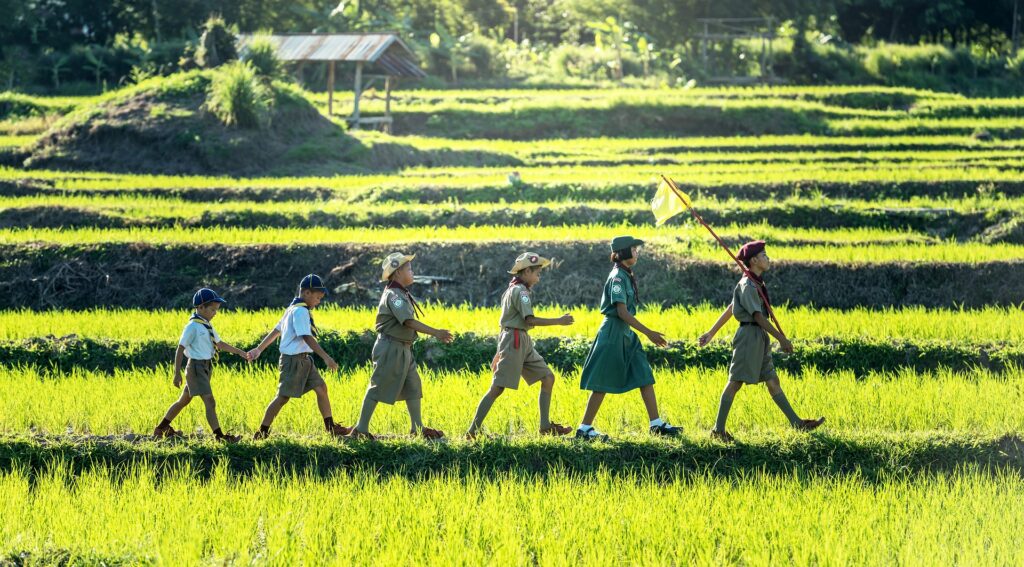
Moral of the History of Outdoor Recreation
Outdoor recreation, as part of recreation, evolved from skills which our ancestors learned and mastered to survive. The requirement of the skills thereafter diminished and then they evolved to become sports and recreation. – Here comes the beginning of the history of outdoor recreation.
However, recreation was once considered as “idle” from the religious view point and we, as human beings, should work and devote our energy and belief in god.
But, recreation has proven that it is not only for “self”, but also for the society as a whole – economy and education.
It eliminated the belief of “idleness” and soon the restriction had been weakened and thereafter it grew as people started to see the importance not only for individual, but also for the community.
Take the history of outdoor recreation as a lesson. What we take for granted and enjoy now has gone through a long-life evolution. Right now, we have “free” privilege to enjoy. – So let’s maintain this and preserve for our next generation!
Relevant posts
